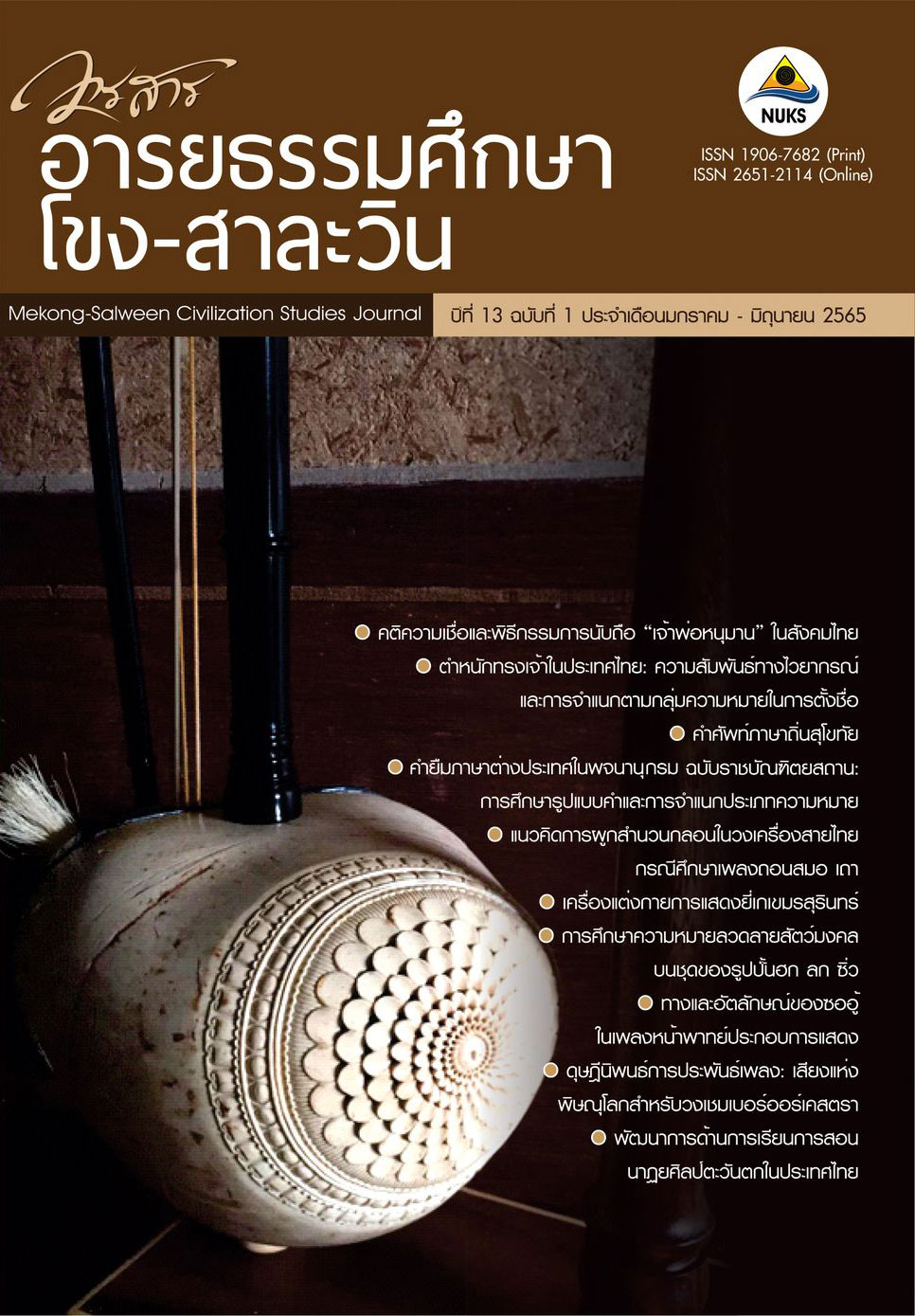The Concept of Creating the Melodic Phrases in Thai String Ensemble: A Case Study of Thon Samo Thao แนวคิดการผูกสำนวนกลอนในวงเครื่องสายไทย กรณีศึกษาเพลงถอนสมอ เถา
Main Article Content
Abstract
This research article is partially fulfilment of the research entitled Thai String Ensemble Methodology: A case study of Associate Professor. Dr. Yootthana Chuppunnarat aiming to create unique and individual melodic phrases in Thai string counterpoints harmoniously. This research was conducted by studying the principles of melody translation, melody variation, and melody counterpoint between Jakhe, Saw-Duang, Saw-U, and Khlui Pieng Or, using the Thon Samo Thao as a case study. This research employed a qualitative research methodology by using participant observation, interviews, note-takings, and researching academic papers, research articles, books, textbooks and digital media. The results showed that Thang Jakhe (The way of playing Jakhe) was the translation of the melody and acted as the major instrument of Khong Wong Yai, and Saw Duang, Saw-U, and Khlui Pieng Or were simply creating melodic phrases in their own direction in a proper manner. The creation of melodic phrases were based on 3 important principles: 1) maintaining the sound in the main melody, 2) conducting the melody in harmony with Thang Jakhe (The way of playing Jakhe), and 3) conducting the melody with rhyme. The rhetoric of the poems are as follows: 1) Klon Faak (Goal-delayed melodic phrases), 2) Klon Pan (Complex melodic phrases), and 3) Klon Lai Siang Kuen-Long (Way up and down passage) along with the harmonization of the instrument which was based on the principle of harmony.
Downloads
Article Details

This work is licensed under a Creative Commons Attribution-NonCommercial-NoDerivatives 4.0 International License.
References
Chaiseri, P. (1997). Buddhist Principles in Thai Classical Music. N. P: n.p.
Chaiseri, P. (2014). The Composing Thai Classical Music. Bangkok: Chulalongkorn University Press.
Chaiseri, P. (2016). The Music Analysis. Bangkok: Chulalongkorn University Press.
Chantavanich, S. (2008). The qualitative research. Bangkok: Chulalongkorn University Press.
Pornprasit, K. (2003). The Program of the 16th Southern Thai Musical Promotion: The Melodic Harmonization of Traditional Thai String Instrument. Songkhla: Thaksin University Press.
Samrongthong, B. (1996). The Melodic Progression of Percussion Instrument. Bangkok: Chulalongkorn University Press.
Srisakon, P. (2017). Counterpoints in Verses and Melodies for Saw-U. Journal of Fine and Applied Arts Chulalongkorn University, 4(1), 15-34.
Srisakon, P. (2020). The Concept of Creating the Melodic Phrases for Saw-U in Ching Mu Long Chan Diaw: a Case Study of Associate Professor. Phichit Chaiseri. Journal of Fine and Applied Art Chulalongkorn University, 7(1), 75-95.
Srisakon, P. (2021). The Melody of Saw U. Bangkok: Sai Song Duangkaew.


